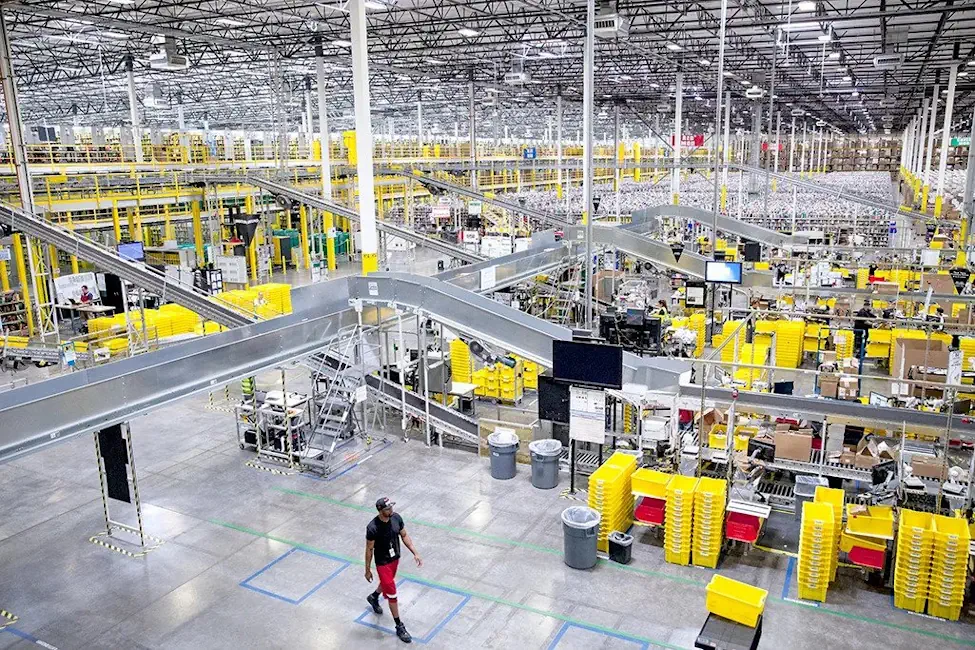Canada’s e-commerce sector has seen unprecedented growth in recent years, fueled by a surge in online shopping that shows no signs of slowing down. At the heart of this boom are e-commerce fulfillment centers—large, sophisticated warehouses that play a crucial role in ensuring products reach consumers efficiently. For Canadian entrepreneurs, understanding the rise of these fulfillment centers is essential for capitalizing on new opportunities in the online retail space.
The Expansion of E-Commerce Fulfillment Centers
E-commerce fulfillment centers have become a cornerstone of the retail industry in Canada, with companies like Amazon, Shopify, and Walmart investing heavily in expanding their logistics networks. These centers are strategically located to reduce delivery times and meet the growing demand for fast, reliable shipping.
For instance, Amazon recently announced the opening of several new fulfillment centers in Ontario and British Columbia, creating thousands of jobs and significantly boosting the local economy. This expansion is not just limited to large corporations; small and medium-sized businesses (SMBs) are also leveraging third-party fulfillment services to enhance their delivery capabilities and compete with bigger players.
The rise of e-commerce fulfillment centers in Canada is also linked to the changing expectations of consumers. Today’s shoppers expect faster delivery times and seamless online shopping experiences. Businesses that can meet these demands are more likely to build customer loyalty and gain a competitive edge in the market. This is particularly important for Canadian entrepreneurs who are looking to scale their operations and expand their customer base both domestically and internationally.
Moreover, the strategic placement of fulfillment centers in various regions of Canada helps to mitigate the challenges posed by the country’s vast geography. By having multiple fulfillment centers located near major urban hubs, businesses can reduce shipping times and costs, which is a significant advantage in the competitive world of e-commerce.
The Role of Technology in Streamlining Operations
One of the key drivers behind the efficiency of e-commerce fulfillment centers is the adoption of advanced technologies. Automation, robotics, and artificial intelligence (AI) are increasingly being used to optimize inventory management, picking, packing, and shipping processes. These technologies not only reduce operational costs but also improve accuracy and speed, enabling businesses to meet the high expectations of today’s online shoppers.
A Quebec-based startup, for example, has developed an AI-powered inventory management system that predicts demand and automatically adjusts stock levels across multiple fulfillment centers. This innovation has helped them reduce overstock and stockouts, leading to a 20% increase in sales efficiency. For Canadian entrepreneurs, investing in or partnering with tech-savvy fulfillment centers can be a game-changer in improving customer satisfaction and scaling operations.
In addition to AI, the Internet of Things (IoT) is playing a crucial role in transforming fulfillment center operations. IoT devices can monitor inventory levels in real-time, track the movement of goods within the warehouse, and even predict when equipment may need maintenance, thereby minimizing downtime. These technologies are helping Canadian businesses to operate more efficiently, reduce errors, and enhance the overall customer experience.
As technology continues to evolve, we can expect to see even more innovative solutions being implemented in e-commerce fulfillment centers. For example, some companies are exploring the use of drones for inventory management and even delivery, which could revolutionize the way products are shipped to customers. By staying at the forefront of technological advancements, Canadian entrepreneurs can ensure their businesses remain competitive in the rapidly changing e-commerce landscape.
Sustainability Challenges and Solutions
As the number of e-commerce fulfillment centers grows, so does the environmental impact. The carbon footprint of these large facilities, combined with the increase in delivery vehicles, raises concerns about sustainability. However, there is a growing trend among Canadian fulfillment centers to adopt green practices, such as using renewable energy sources, optimizing delivery routes to reduce emissions, and implementing sustainable packaging solutions.
For example, a fulfillment center in Calgary has recently transitioned to solar power, reducing its carbon emissions by 35%. Additionally, they have adopted biodegradable packaging materials, which has resonated well with environmentally conscious consumers. Canadian entrepreneurs who prioritize sustainability can benefit from partnering with green fulfillment centers, aligning their business practices with the growing consumer demand for eco-friendly products.
Another important aspect of sustainability in e-commerce fulfillment is the reduction of waste. Many fulfillment centers are now focusing on minimizing packaging waste by using materials that are both recyclable and reusable. Some centers have even started implementing zero-waste policies, where all waste materials are either recycled or repurposed.
Canadian businesses can also take advantage of government incentives for adopting green practices. For instance, various provincial and federal programs offer grants and tax credits to companies that invest in renewable energy, energy-efficient technologies, and sustainable practices. By embracing sustainability, Canadian entrepreneurs not only contribute to environmental conservation but also enhance their brand image and attract environmentally conscious consumers.
Impact on Local Economies
The rise of e-commerce fulfillment centers has a significant impact on local economies across Canada. These centers create jobs, stimulate investment in infrastructure, and contribute to the growth of nearby communities. However, they also present challenges, such as increased traffic congestion and the need for skilled labor.
In Ontario, the opening of new fulfillment centers has led to the development of adjacent industries, such as transportation, packaging, and logistics services. This has created a ripple effect, boosting the overall economic activity in the region. For Canadian entrepreneurs, this trend offers opportunities to tap into the growing demand for ancillary services, such as last-mile delivery, warehousing, and logistics support.
Moreover, the presence of fulfillment centers can lead to the development of new business clusters, where multiple related businesses operate in close proximity to each other. This can create a vibrant local economy, where businesses benefit from shared resources, knowledge, and innovation. For Canadian entrepreneurs, being part of such a cluster can provide valuable networking opportunities and access to new markets.
However, the rapid growth of e-commerce fulfillment centers also presents challenges for local communities. Increased traffic from delivery trucks can lead to congestion and environmental concerns, while the demand for skilled labor may outstrip the supply, leading to wage inflation and competition for talent. Entrepreneurs need to be aware of these challenges and work with local governments and communities to find solutions that benefit all stakeholders.
The Future of E-Commerce Fulfillment in Canada
The future of e-commerce fulfillment in Canada looks promising, with continued investment in infrastructure and technology expected to drive further growth. As online shopping becomes more ingrained in Canadian consumer behavior, the demand for efficient, reliable fulfillment services will only increase.
For Canadian entrepreneurs, staying ahead of these trends means exploring partnerships with fulfillment centers, investing in technology, and considering the sustainability of their operations. By aligning their business strategies with the evolving landscape of e-commerce fulfillment, entrepreneurs can position themselves for success in the competitive retail market.
In the coming years, we can expect to see further innovations in the field of e-commerce fulfillment. For example, the use of autonomous vehicles for delivery and the expansion of same-day delivery services could become more prevalent. Additionally, the integration of AI and machine learning into every aspect of the fulfillment process will likely lead to even greater efficiencies and cost savings.
For Canadian businesses, the key to success in this evolving landscape will be agility and innovation. Entrepreneurs who are able to quickly adapt to new technologies and consumer demands, while also maintaining a focus on sustainability, will be best positioned to thrive in the competitive e-commerce market.
Conclusion
E-commerce fulfillment centers are transforming the retail landscape in Canada, offering businesses the tools they need to meet consumer demands in a fast-paced, digital world. For Canadian entrepreneurs, understanding and leveraging this trend is key to staying competitive and driving growth in the online retail sector. As the industry continues to evolve, those who adapt and innovate will be best positioned to thrive in the future of e-commerce.







